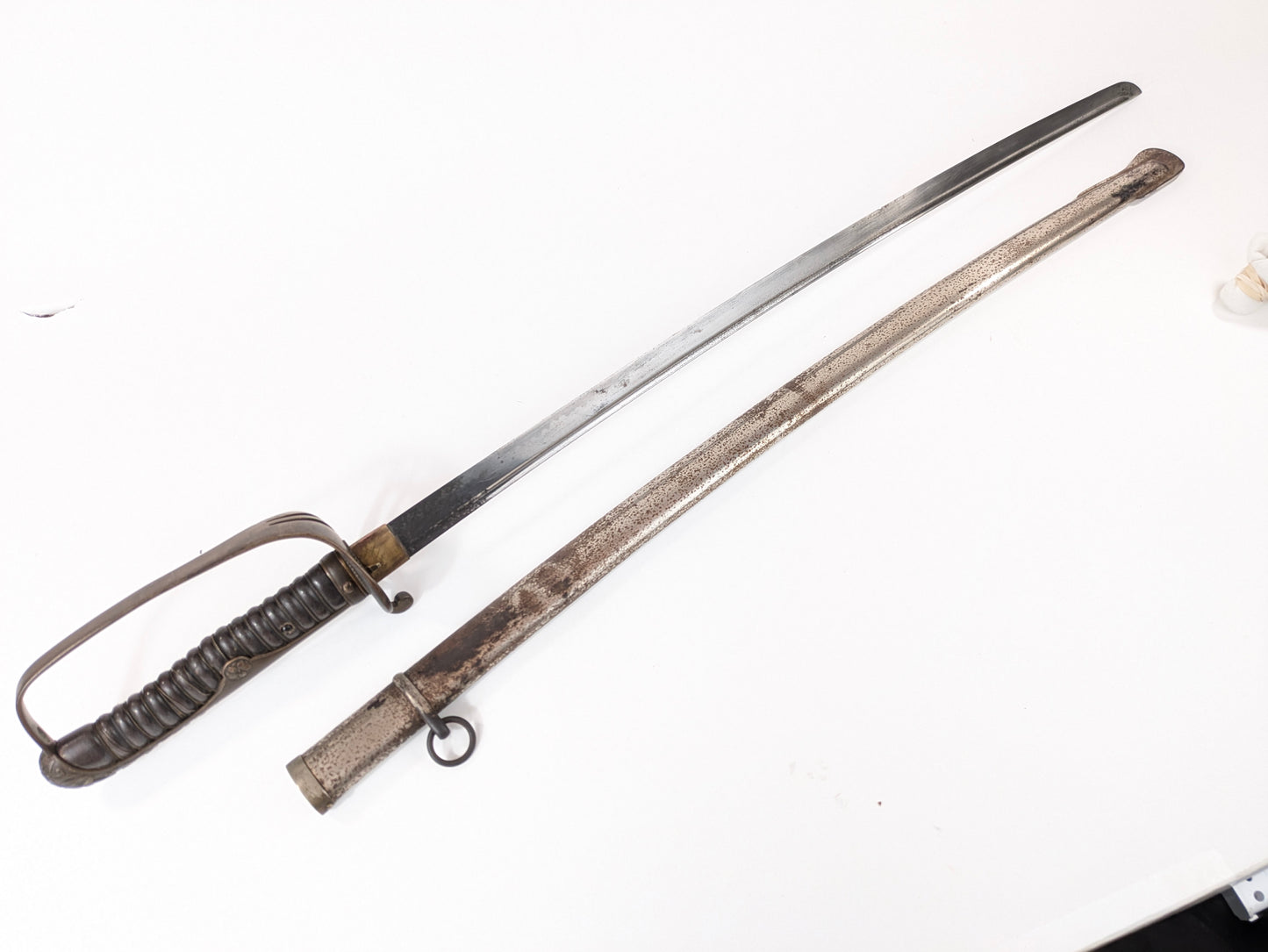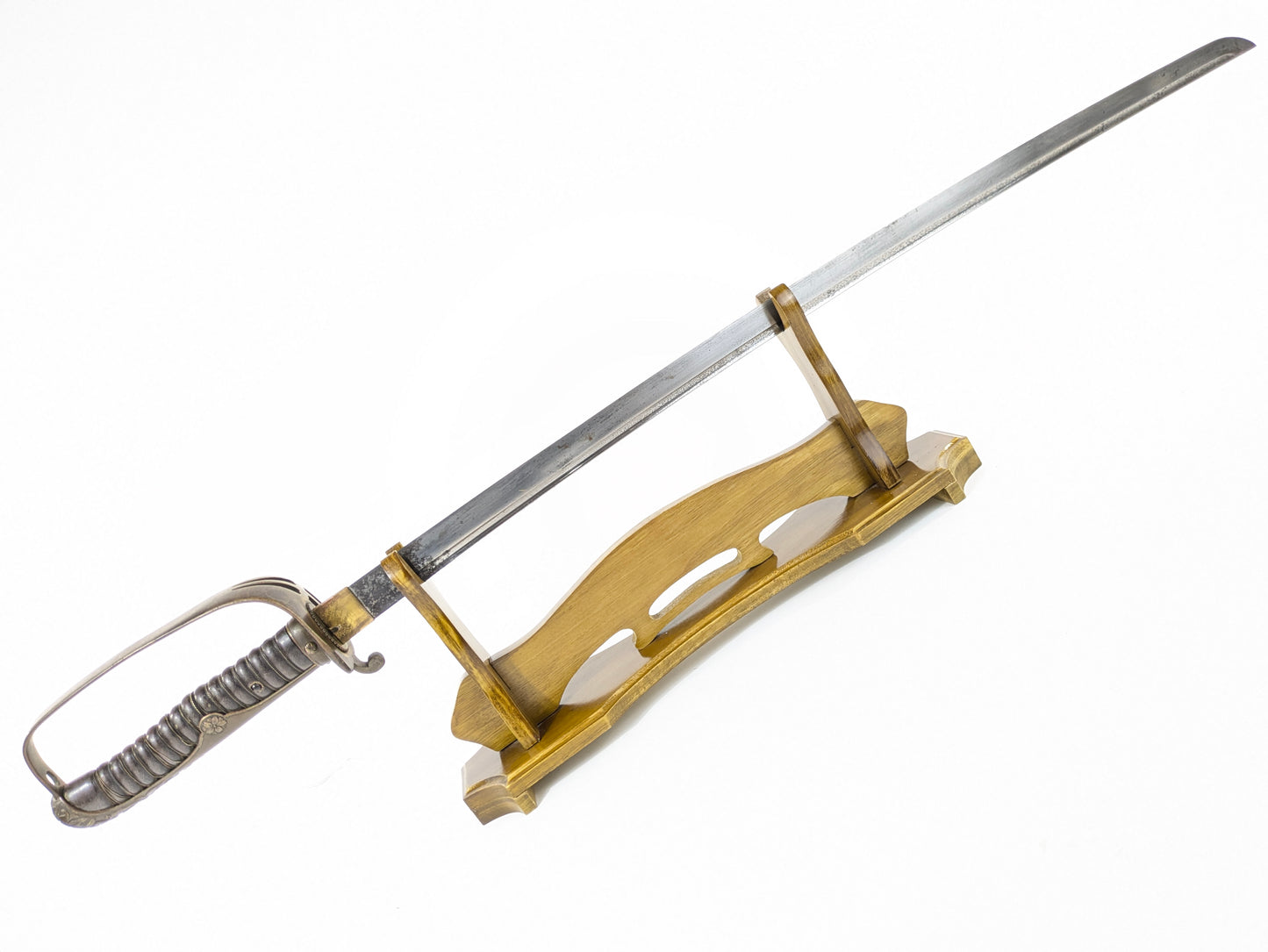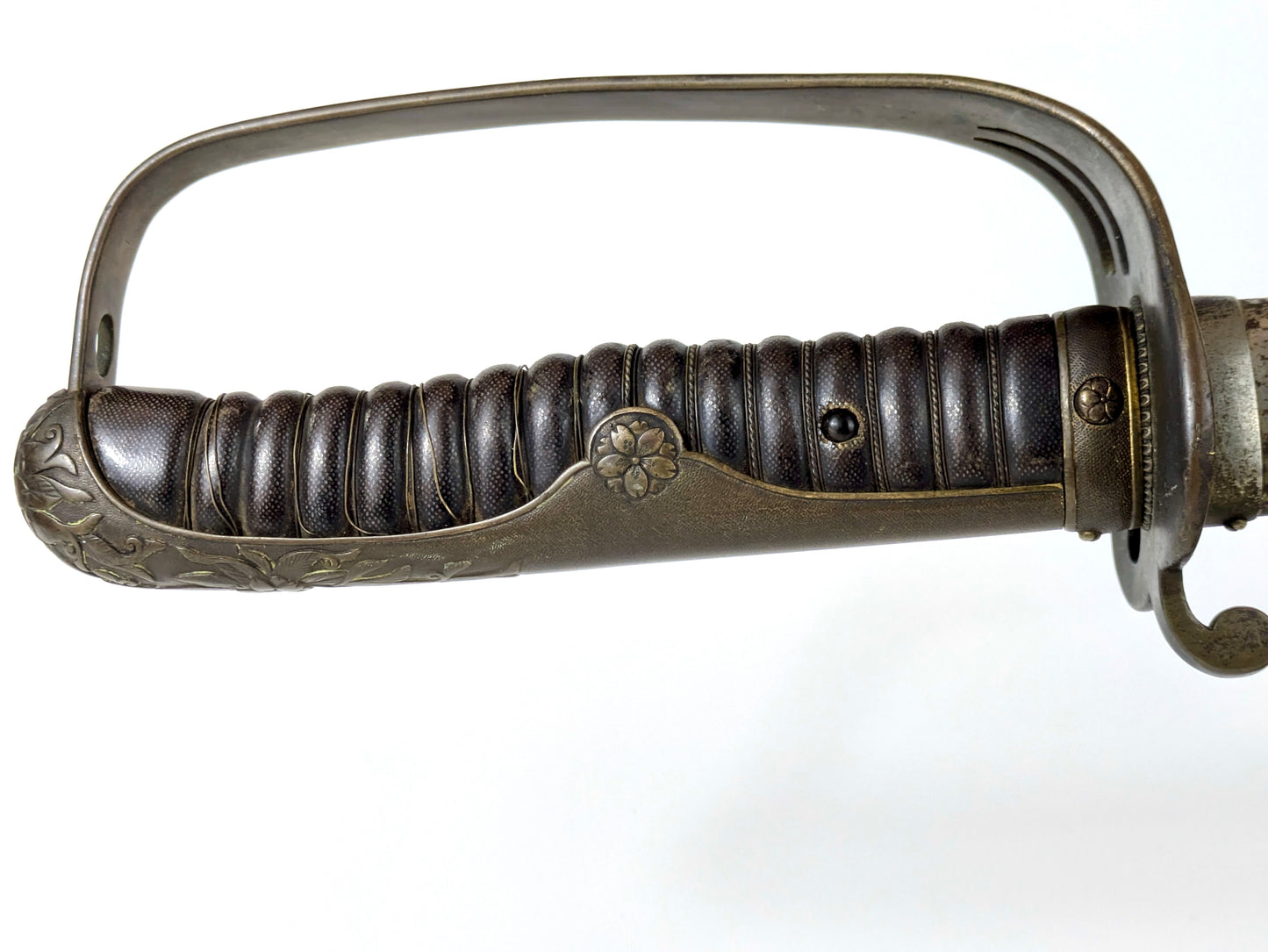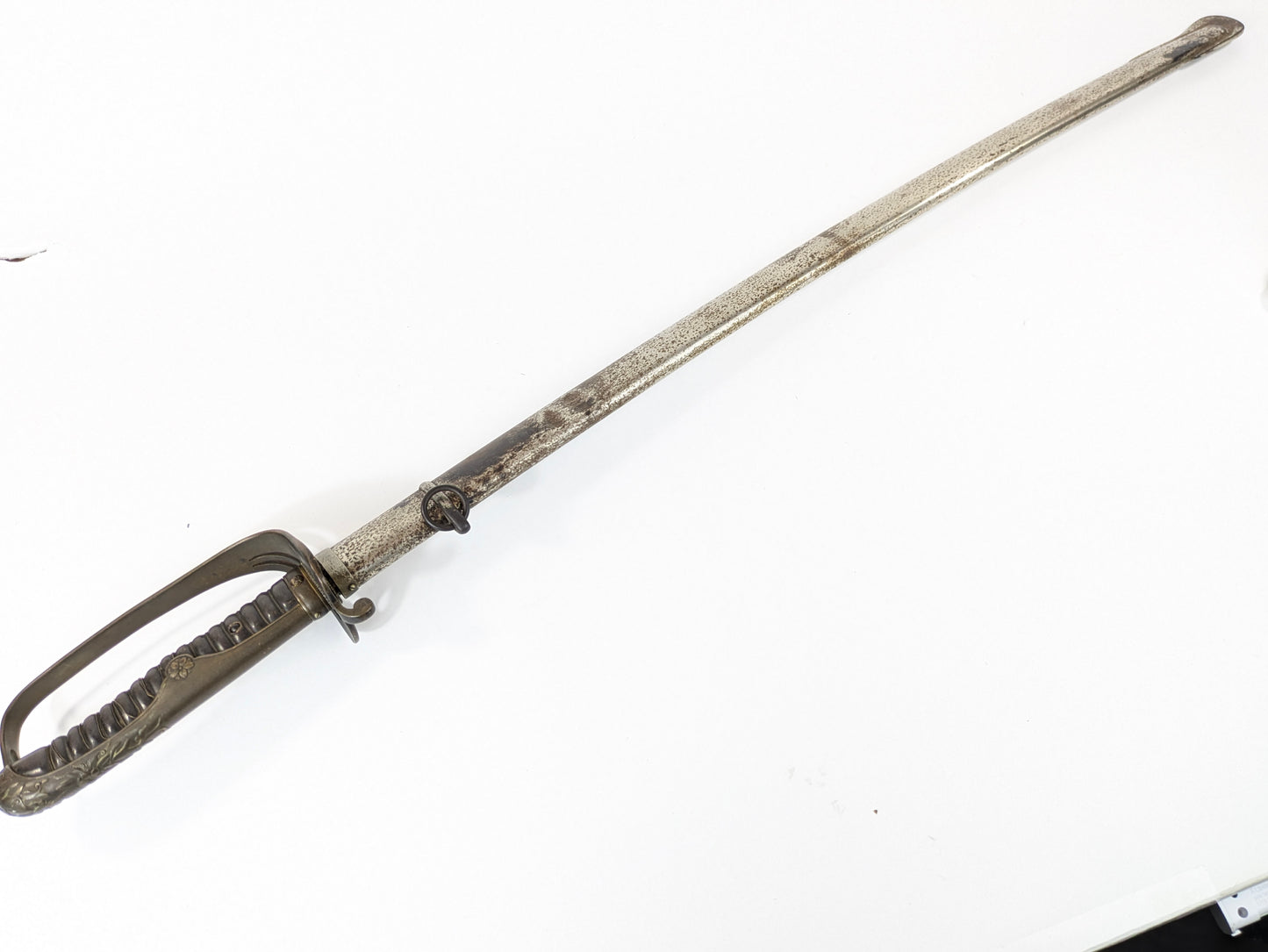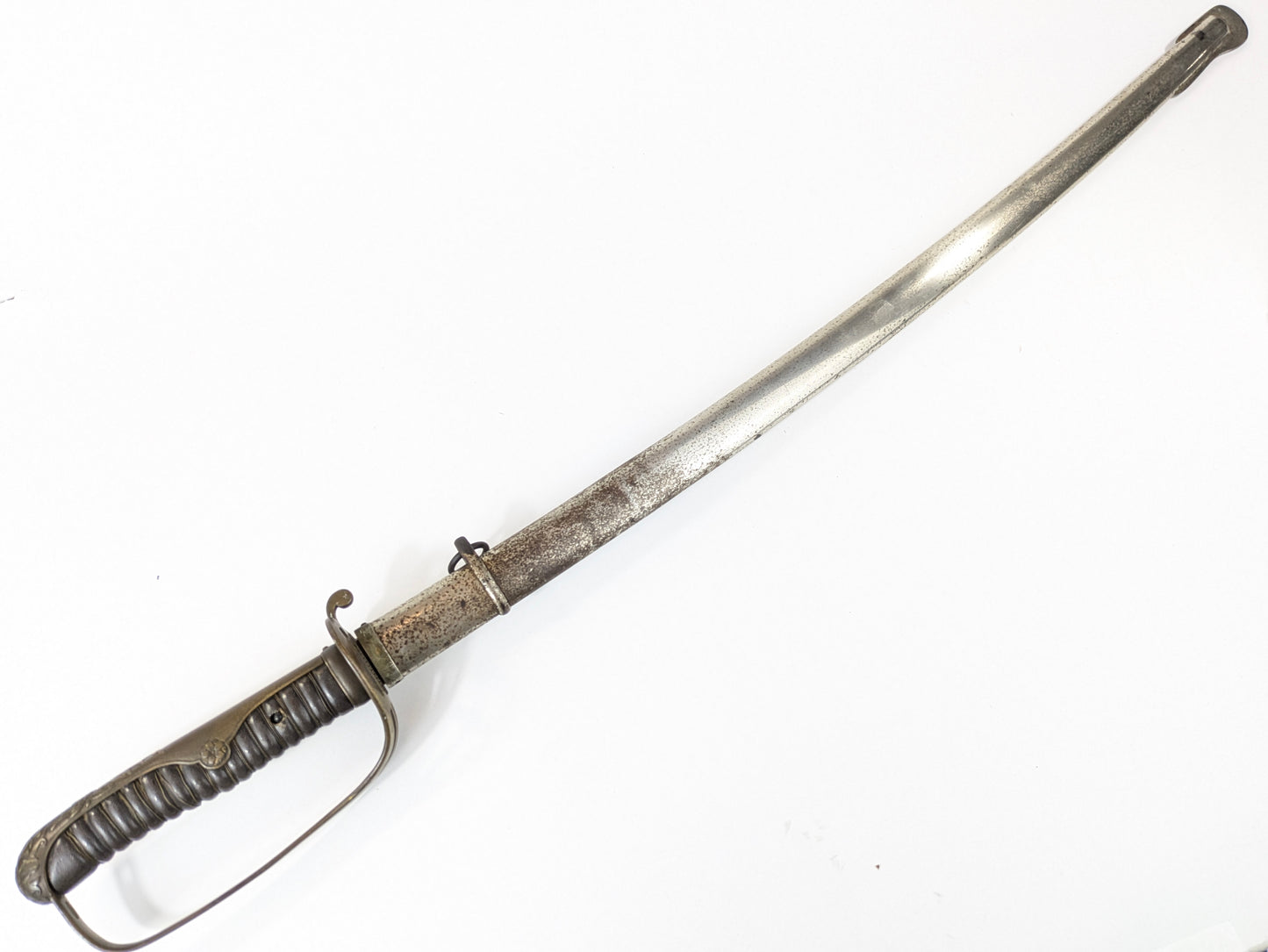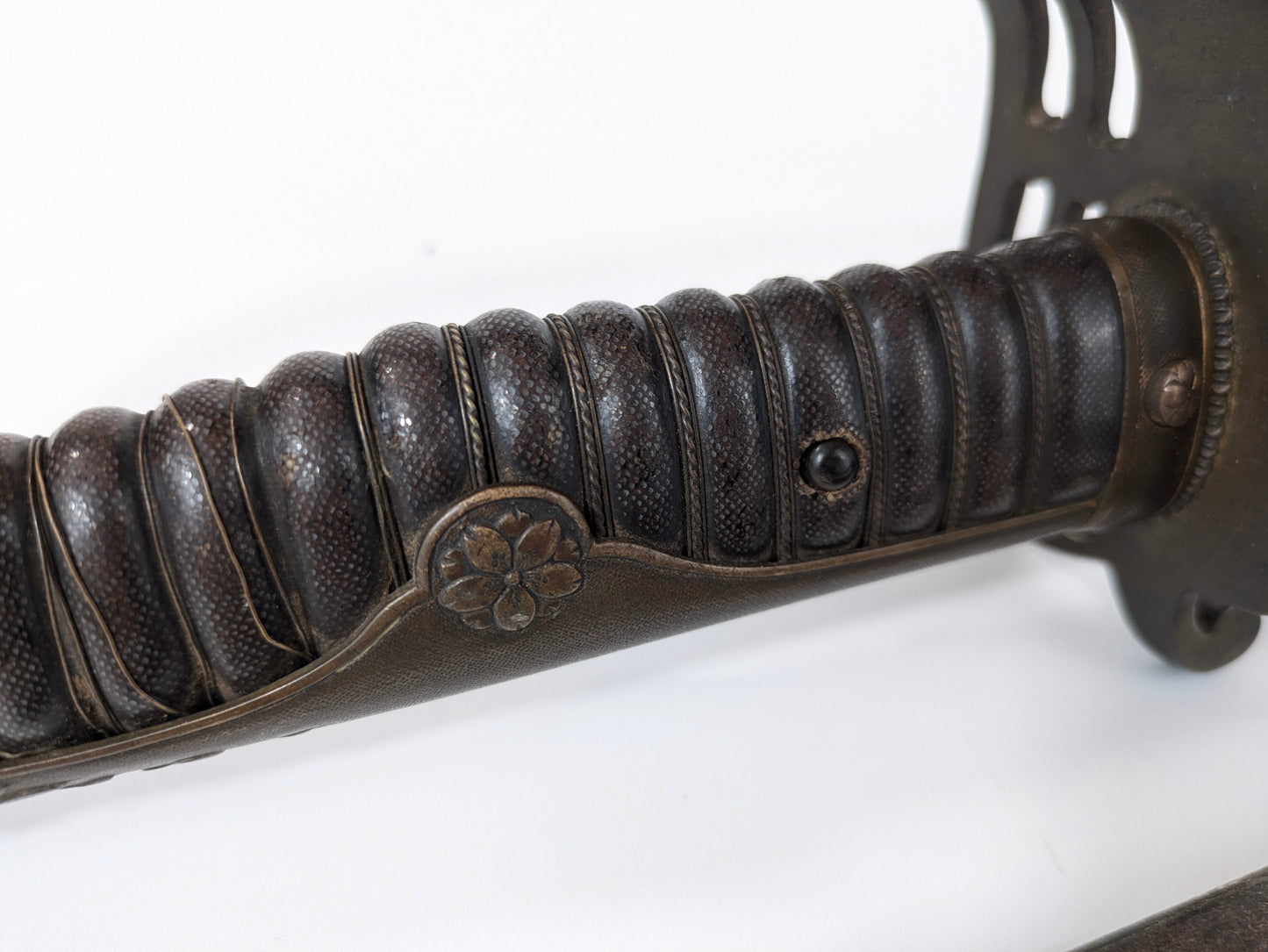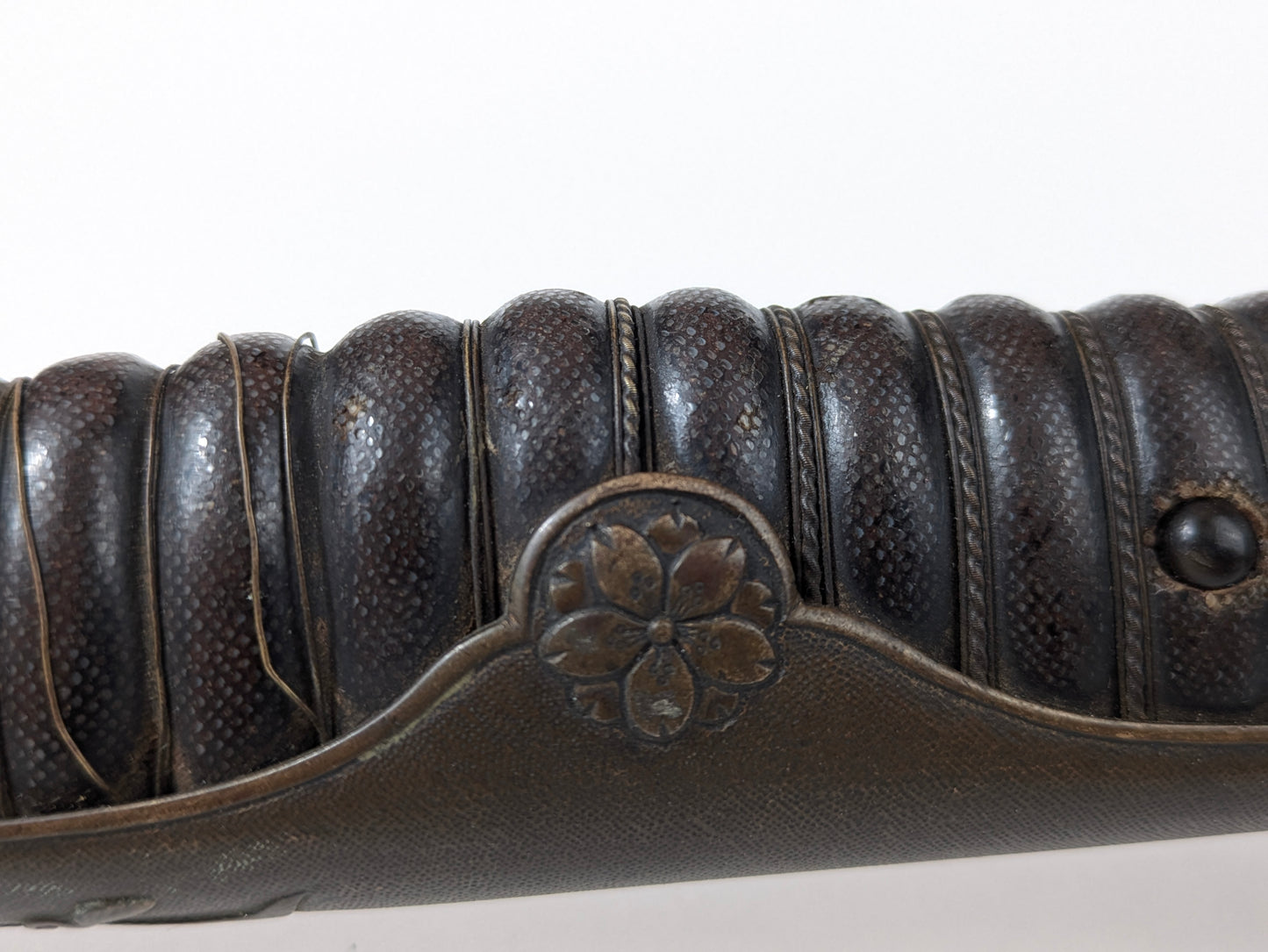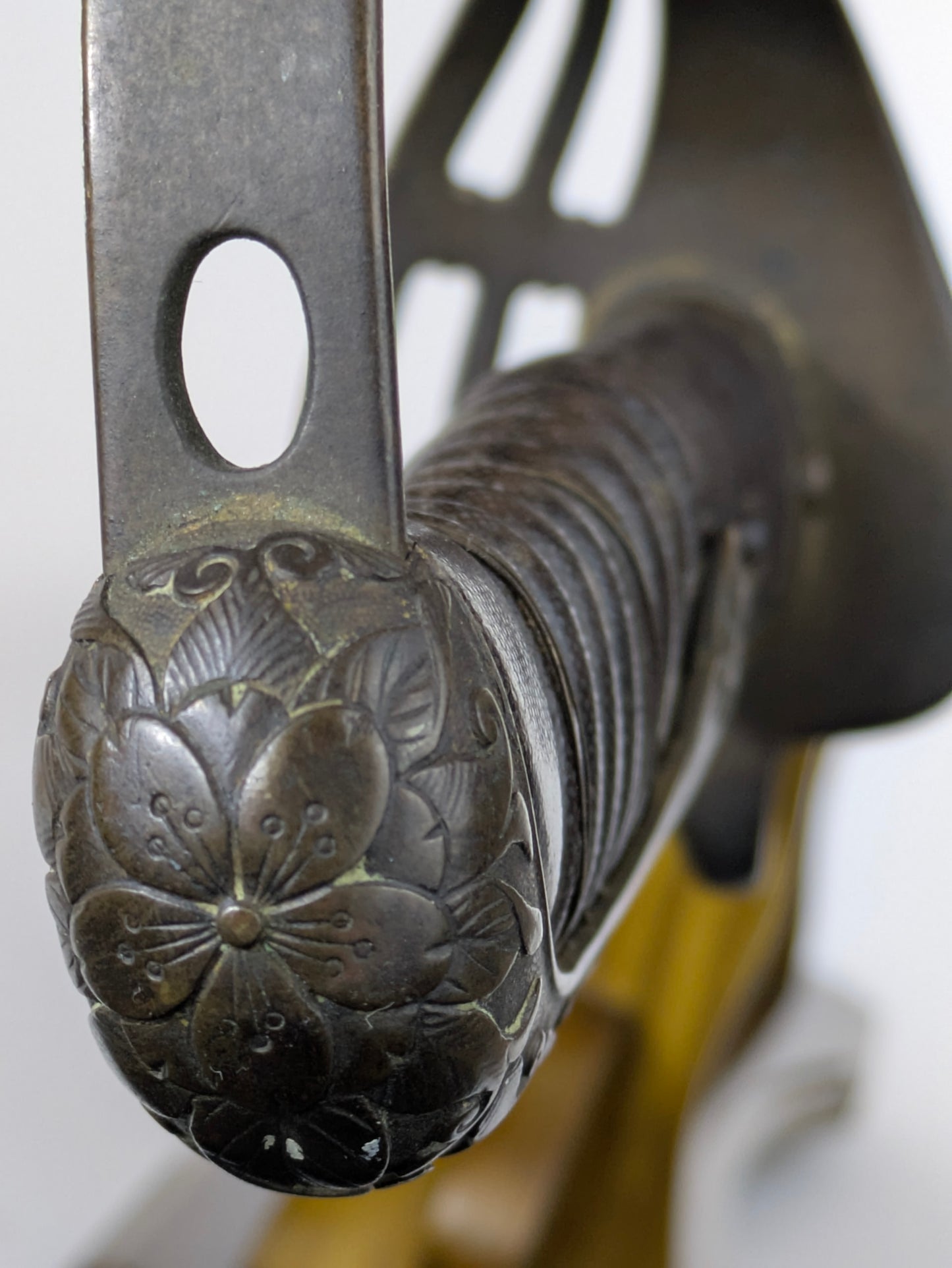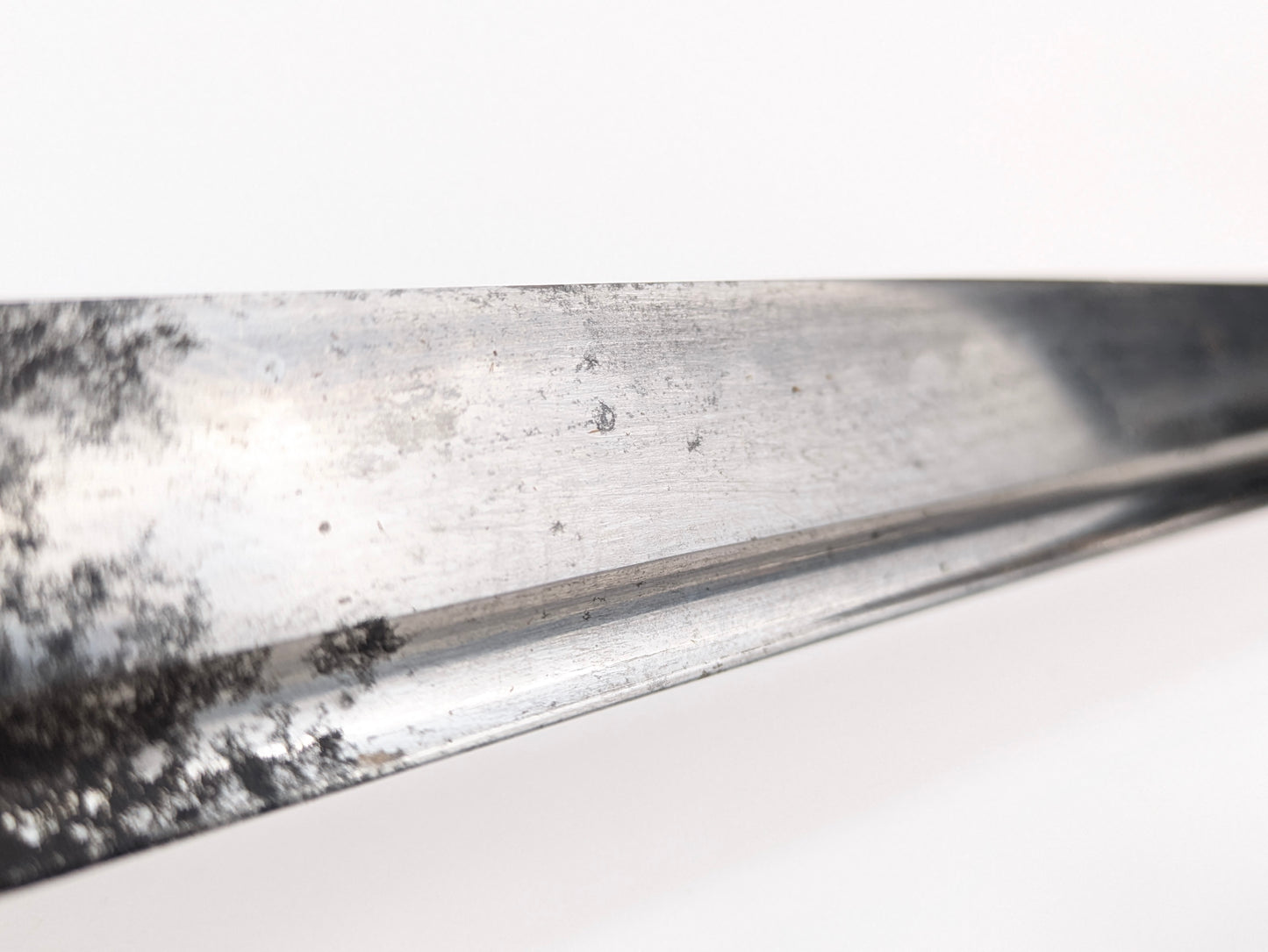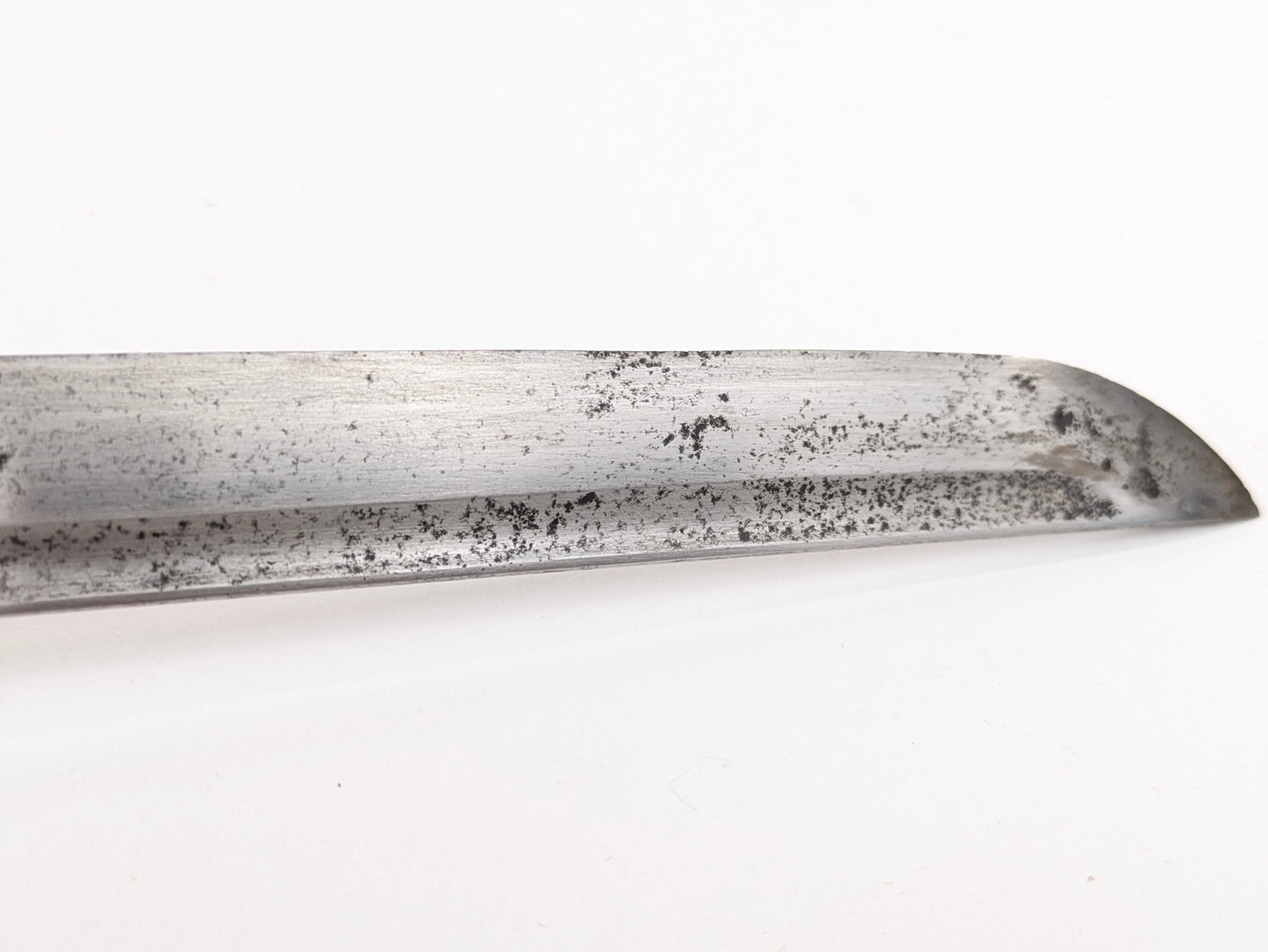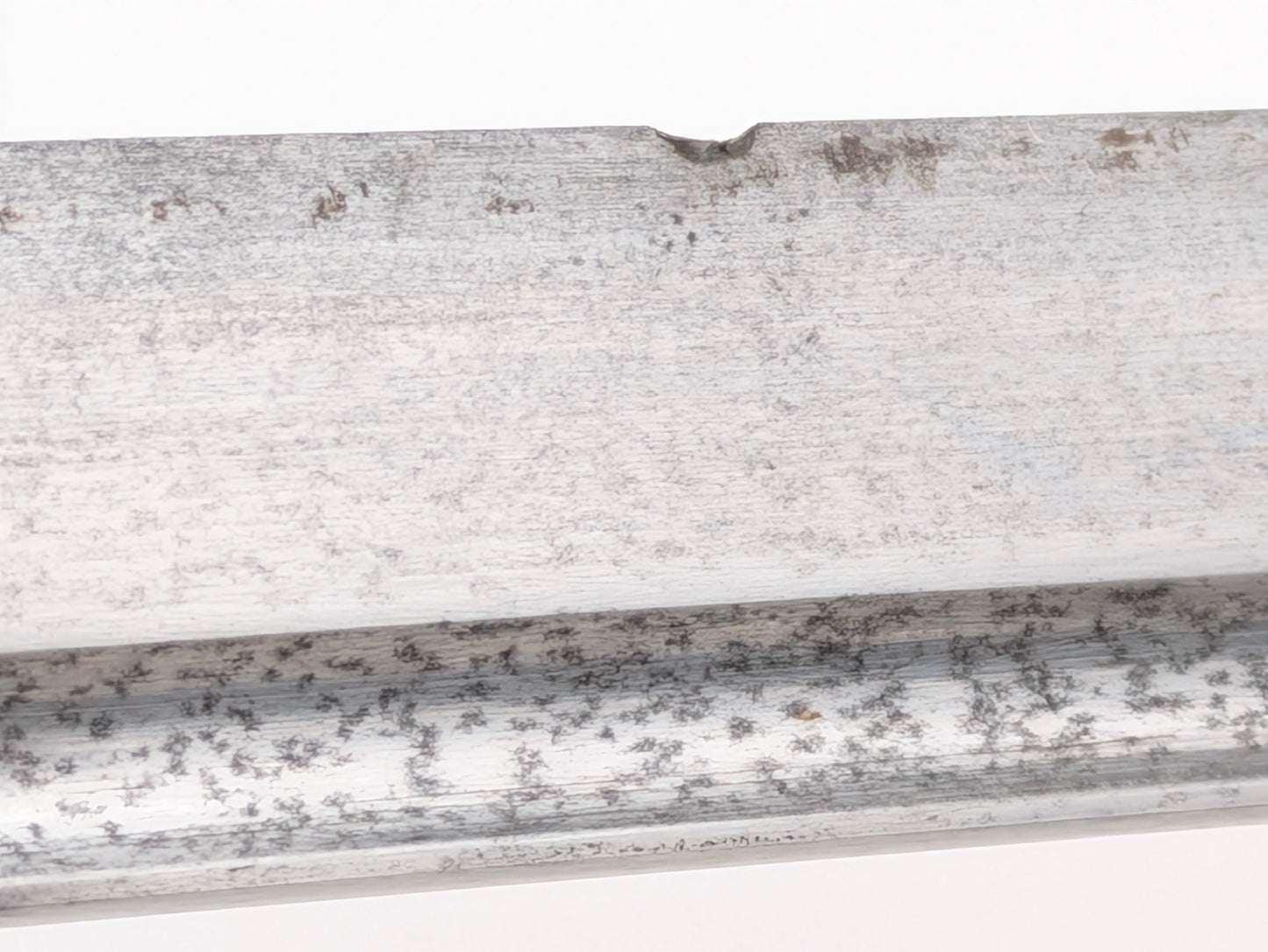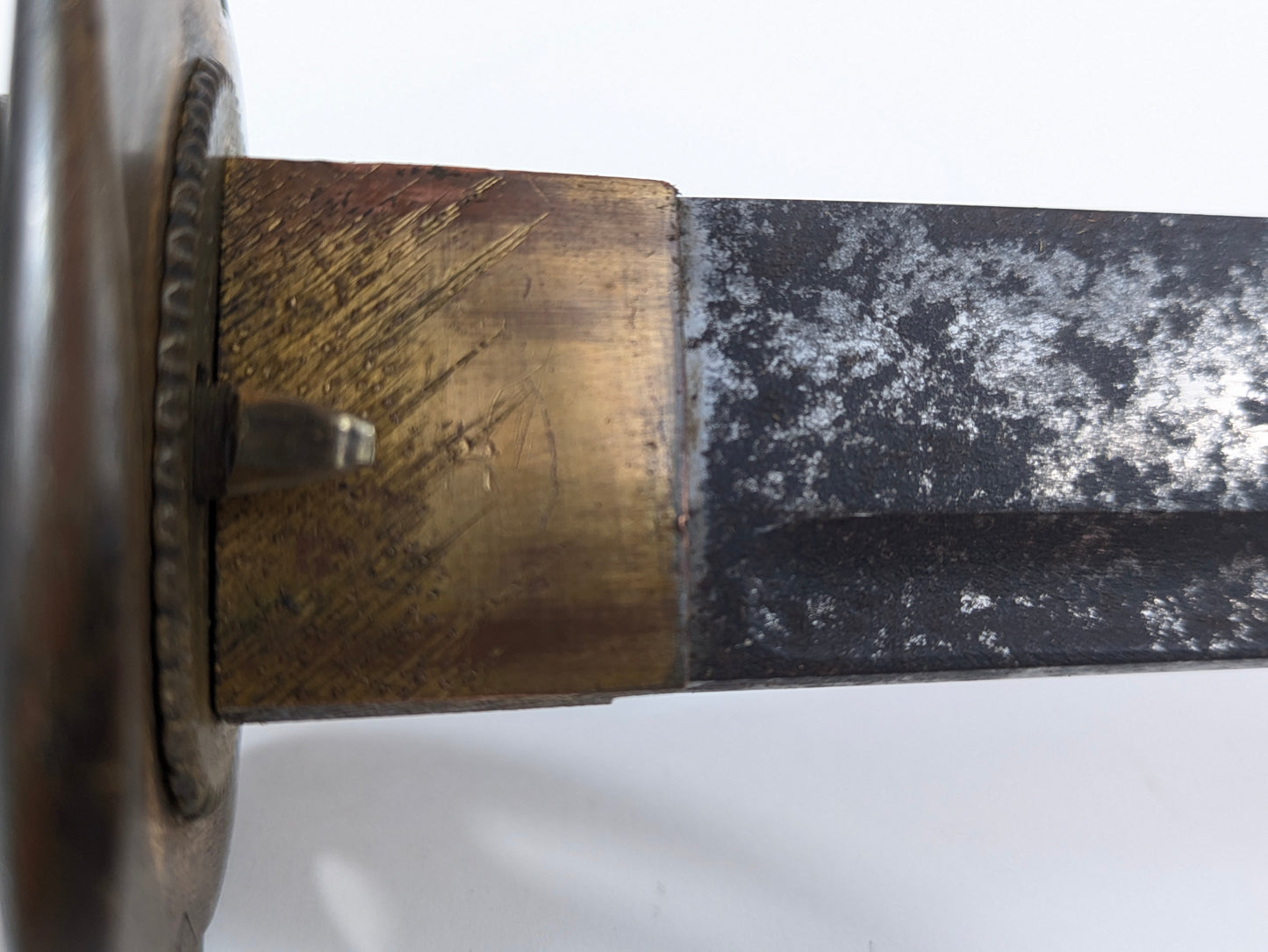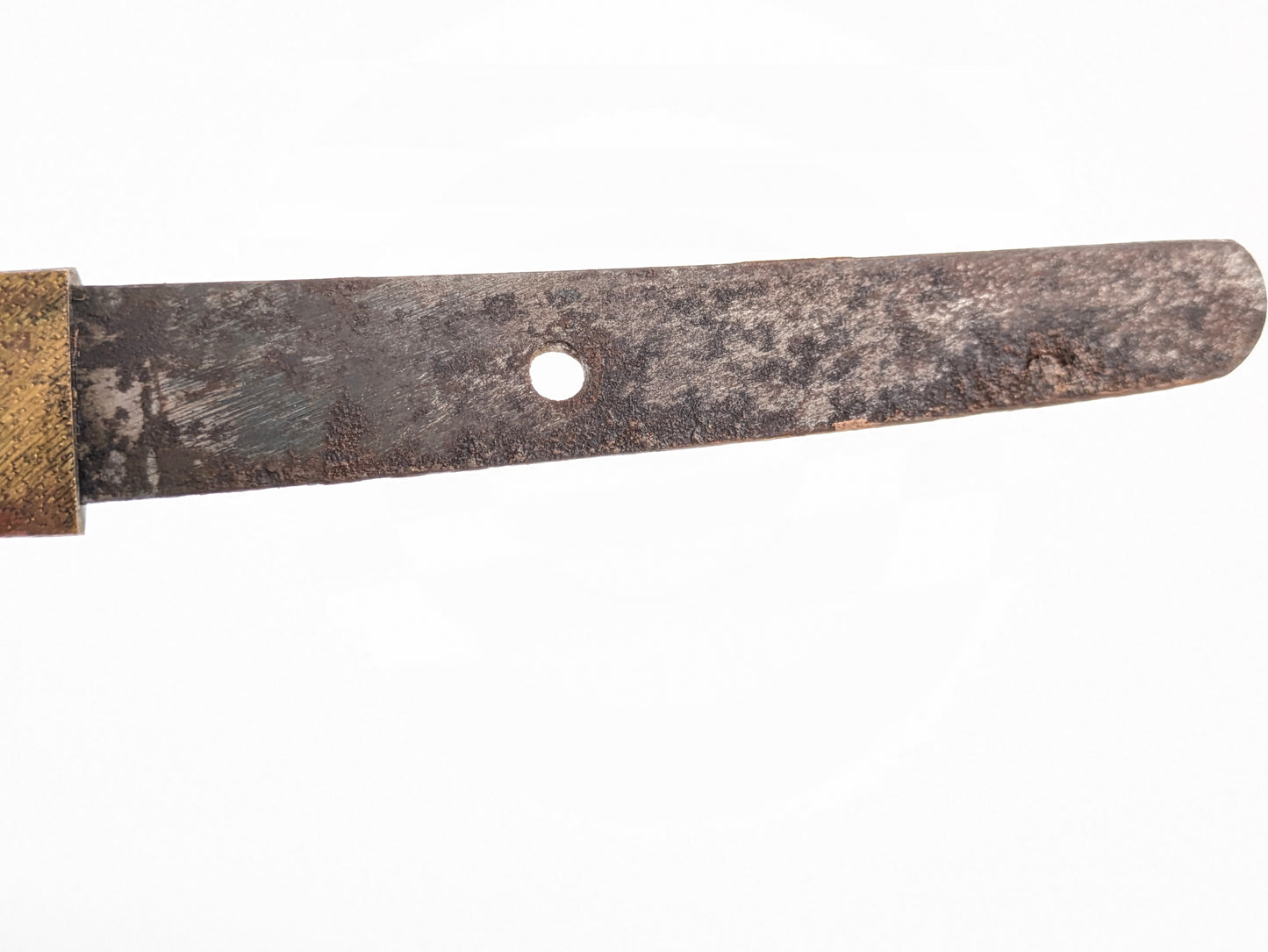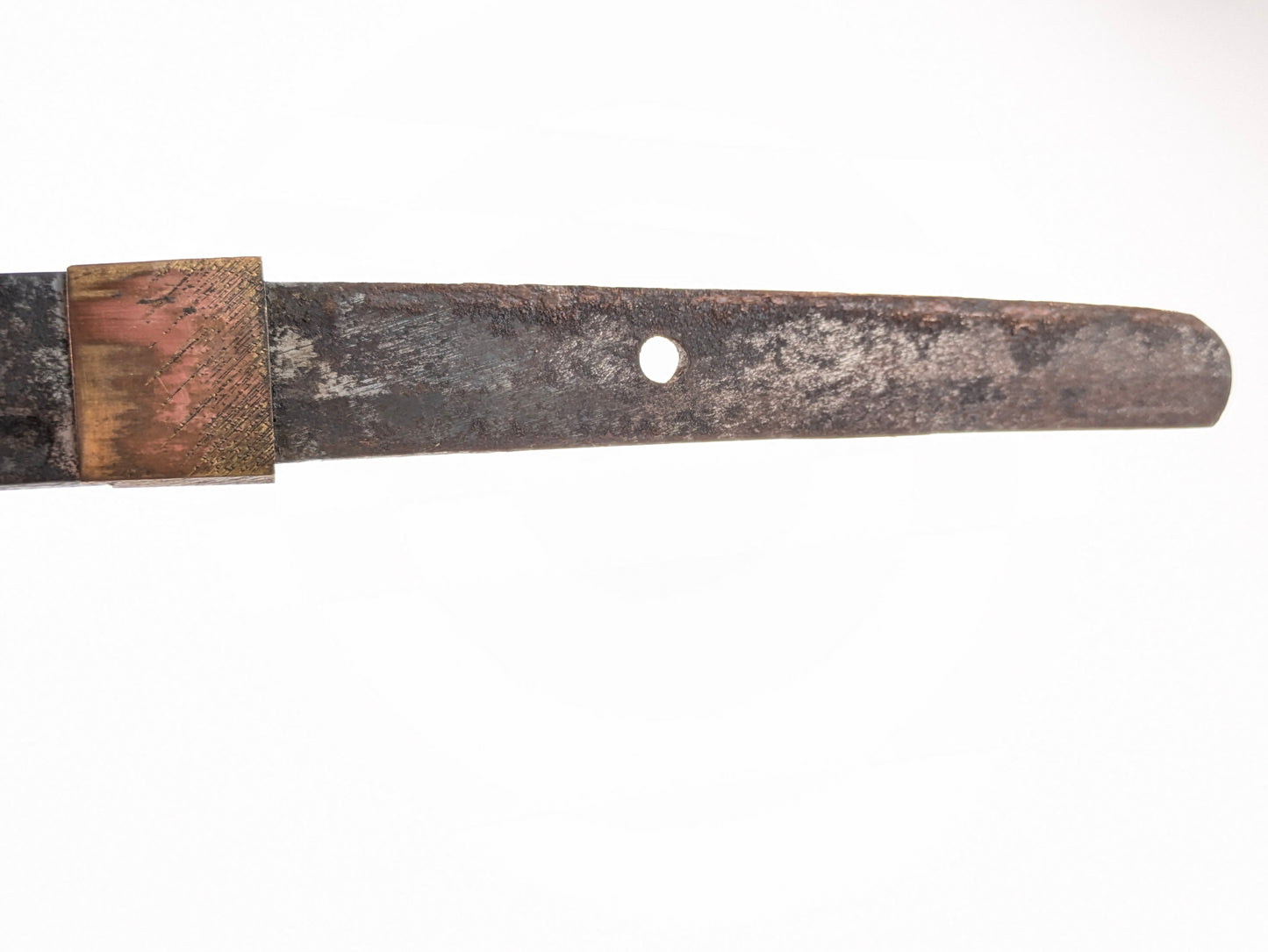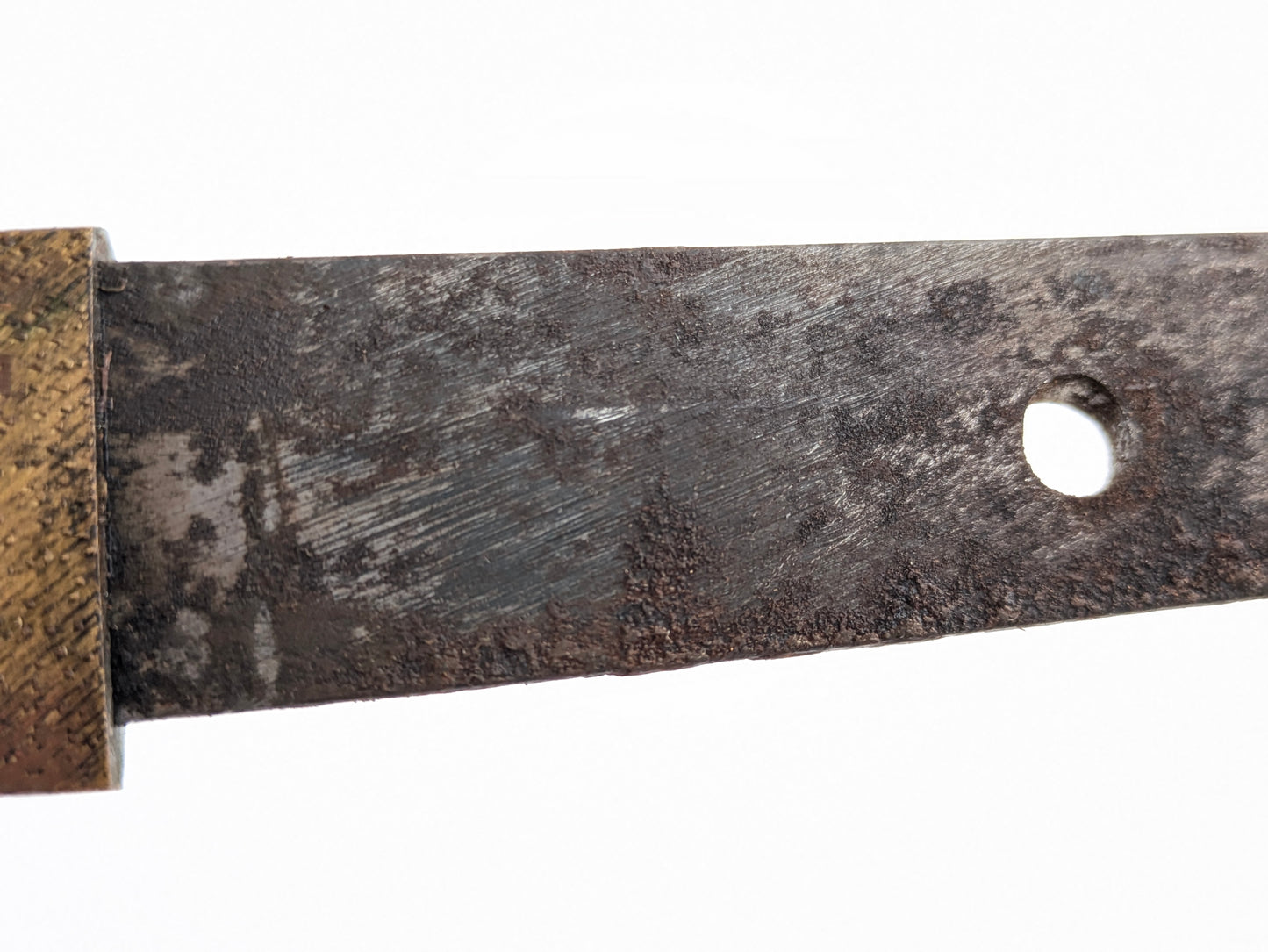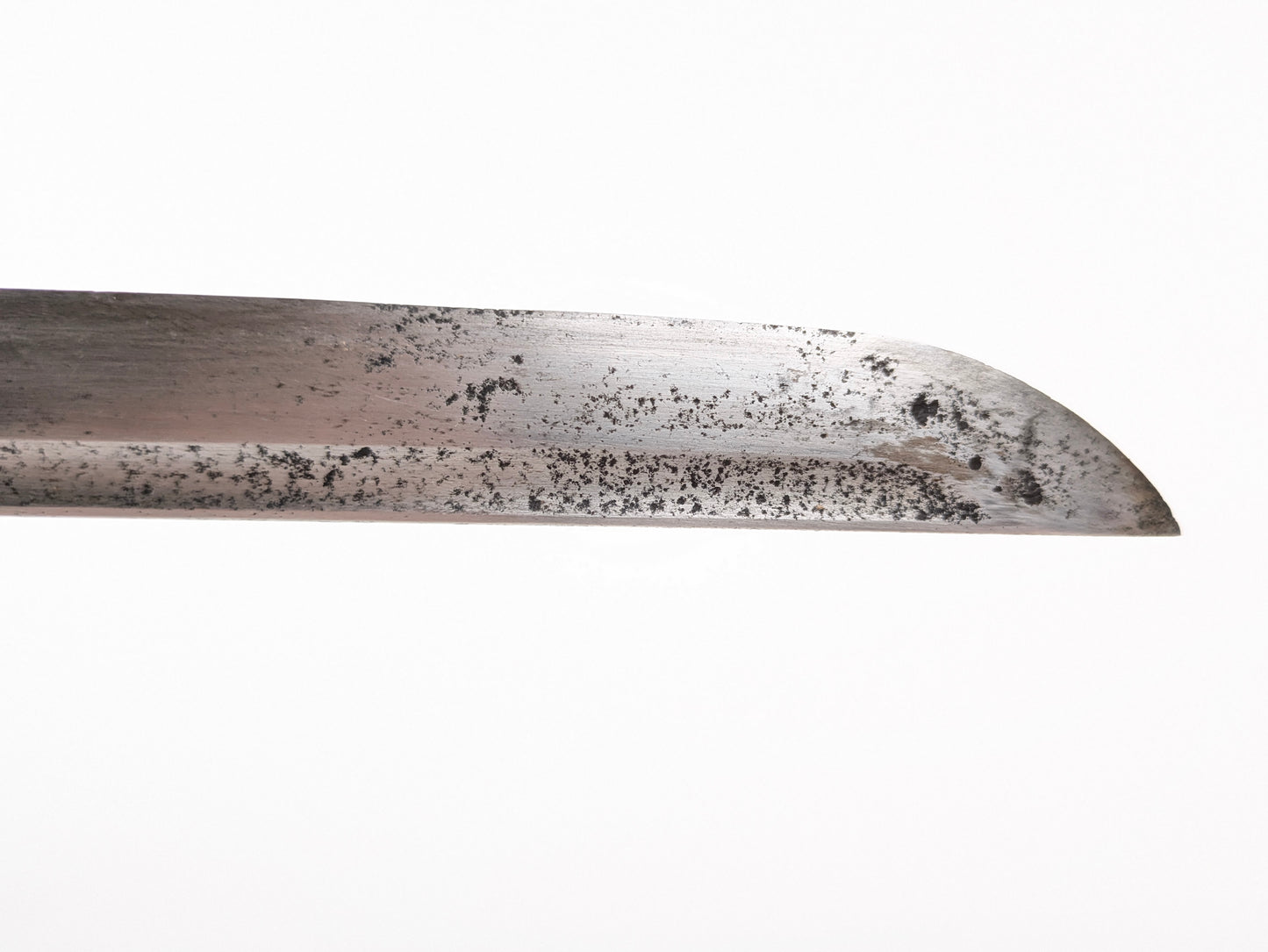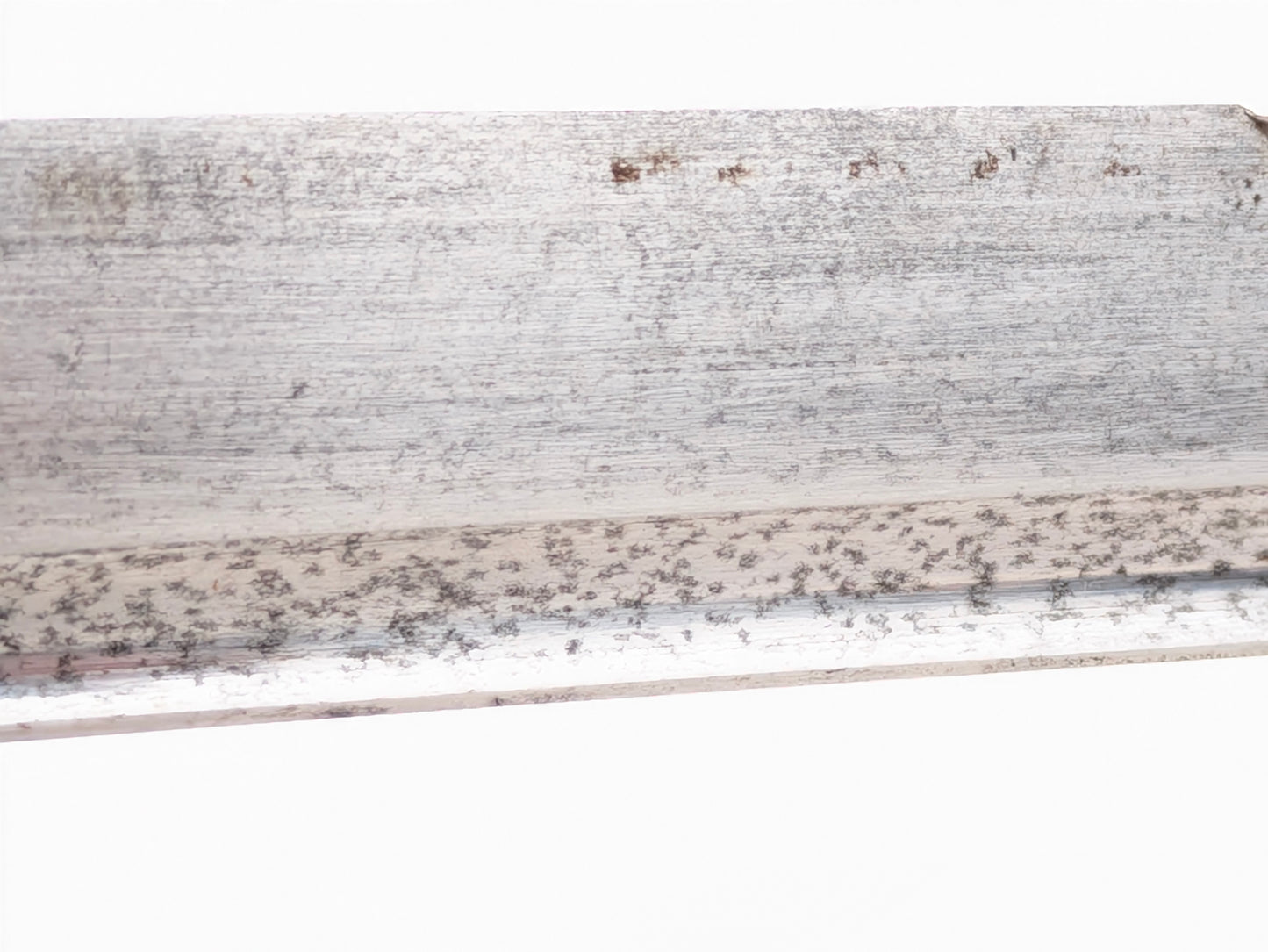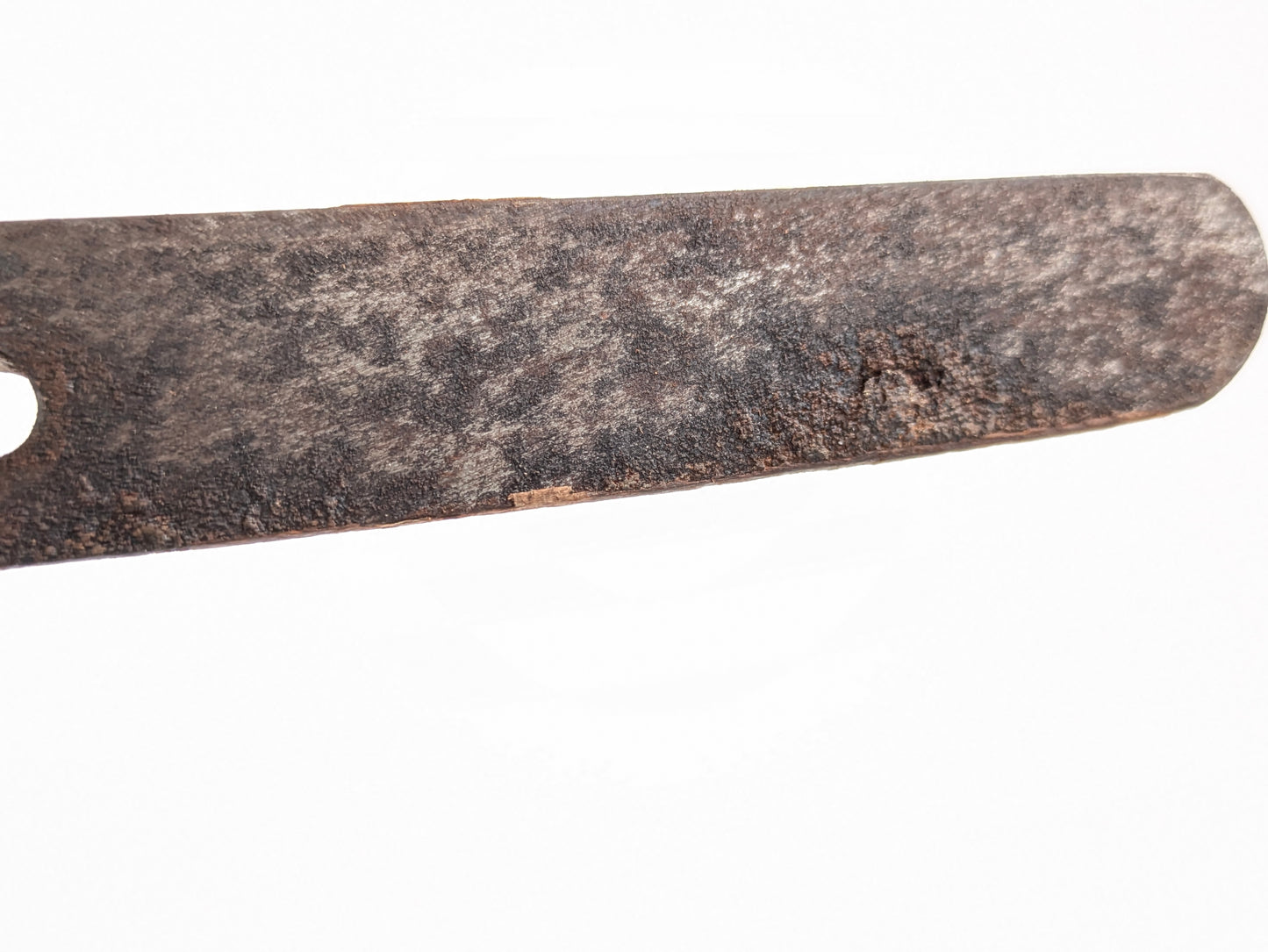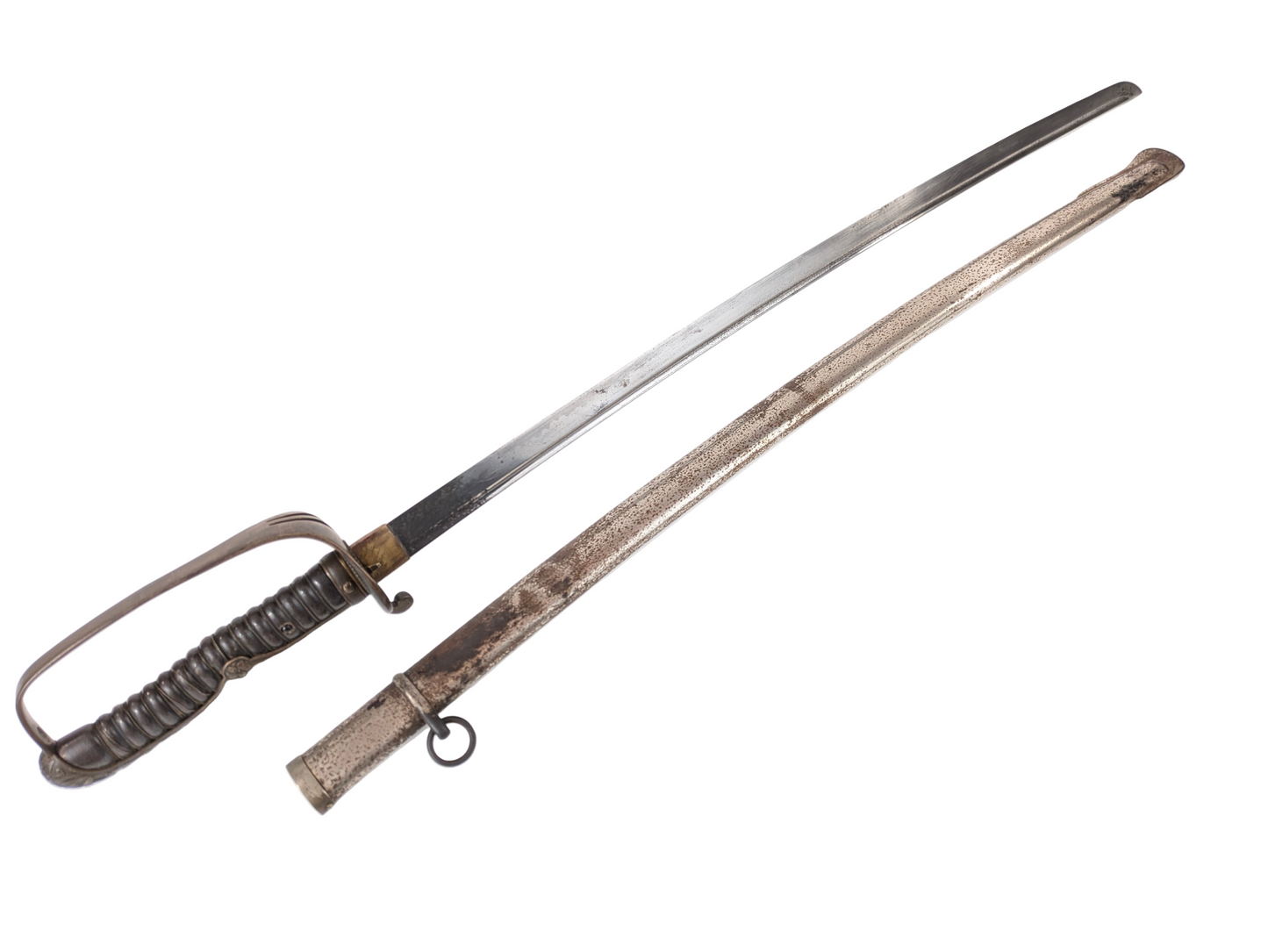Antique Japanese Type 19 Cavalry Officer’s Sword (Kyū-guntō) Meiji c1880's LS188
Antique Japanese Type 19 Cavalry Officer’s Sword (Kyū-guntō) Meiji c1880's LS188
Couldn't load pickup availability
Item Card — LS121
Japanese Army Type 19 Cavalry Officer’s Sabre (company-grade), c. 1886–1930s
Materials: steel blade with single fuller; brass guard/knuckle-bow and backstrap with cherry-blossom ornament; ray-skin (samegawa) grip bound with twisted wire; steel scabbard with one suspension ring.
Features: broad D-guard with pierced sword-knot slot; cherry-blossom medallion at the backstrap ear and floral pommel—hallmarks of the company-grade Type 19. Dark (dyed) samegawa grip.
Condition: honest service wear. Blade shows uniform peppering/gray patina with a small edge nick near the monouchi; tight hilt; wire binding intact with light gaps; brass with dark, unpolished patina. Scabbard retains its original finish with heavy freckling and scattered losses but remains solid and correctly fitted.
Museum Card — LS121
Type 19 Cavalry Officer’s Sabre (Japan)
Meiji–Taishō era, introduced 1886 for cavalry officers; superseded by the shin-guntō in 1934.
Brass hilt with cherry-blossom motifs; ray-skin grip; steel blade with single fuller; steel scabbard, one ring.
This example is the company-grade pattern, identified by the partially decorated backstrap with sakura rosette at the center and floral pommel. The grip is wrapped in dark-dyed samegawa, typical of period officer swords. Blade and scabbard exhibit field use and stable patina.
Online Listing — LS121
Japanese Type 19 Cavalry Officer’s Sabre (Company-Grade) — Meiji 19 pattern, c. late-19th to early-20th century
Overview
A solid, untouched example of Japan’s first purpose-built cavalry officer’s sword. Adopted on July 6, 1886, the Type 19 reworked the earlier Type 8 riding sabre into a dedicated cavalry weapon. It kept the rounded pommel and wide knuckle-bow but introduced the distinctive pierced guard and floral ornament that became the service image of mounted officers through the early 20th century, until replacement by the shin-guntō in 1934.
Identification
• Model: Type 19 cavalry sabre for officers, company-grade (partially decorated backstrap with central sakura rosette; floral pommel; cherry-blossom ear).
• Hilt: brass guard/knuckle-bow with sword-knot slot; dark-dyed ray-skin grip bound with twisted wire (all present); warm, untouched patina to the fittings.
• Blade: steel with single, wide fuller; regulation curvature; temper line not intended to be visible on these factory blades.
• Scabbard: steel, single suspension ring at the throat; finish worn from service with uniform peppering—structurally sound and a good fit to the sword.
Condition
Field-used but complete. The blade shows even gray patina/peppering and a small service nick toward the tip; no active corrosion. Hilt is tight; wire is intact; rayskin shows expected age toning. Scabbard retains its ring and drag with heavy freckling and scattered losses from carry, consistent with long service life.
Notes & History
Type 19 sabres were carried by mounted officers across the army—most commonly in cavalry regiments—through the Sino-Japanese and Russo-Japanese War era and into the 1930s. Company-grade swords like this one are the pattern most often seen in period photographs of troop leaders and junior officers on campaign.
Dimensions
Typical Type 19 specs: blade approx. 30–31 in (76–79 cm), overall approx. 37–39 in (94–99 cm). (Exact measurements available on request.)
A straightforward, honest example with appealing, dark patina—ideal for a display that spans late-Meiji to early-Shōwa cavalry equipment.
LS188
